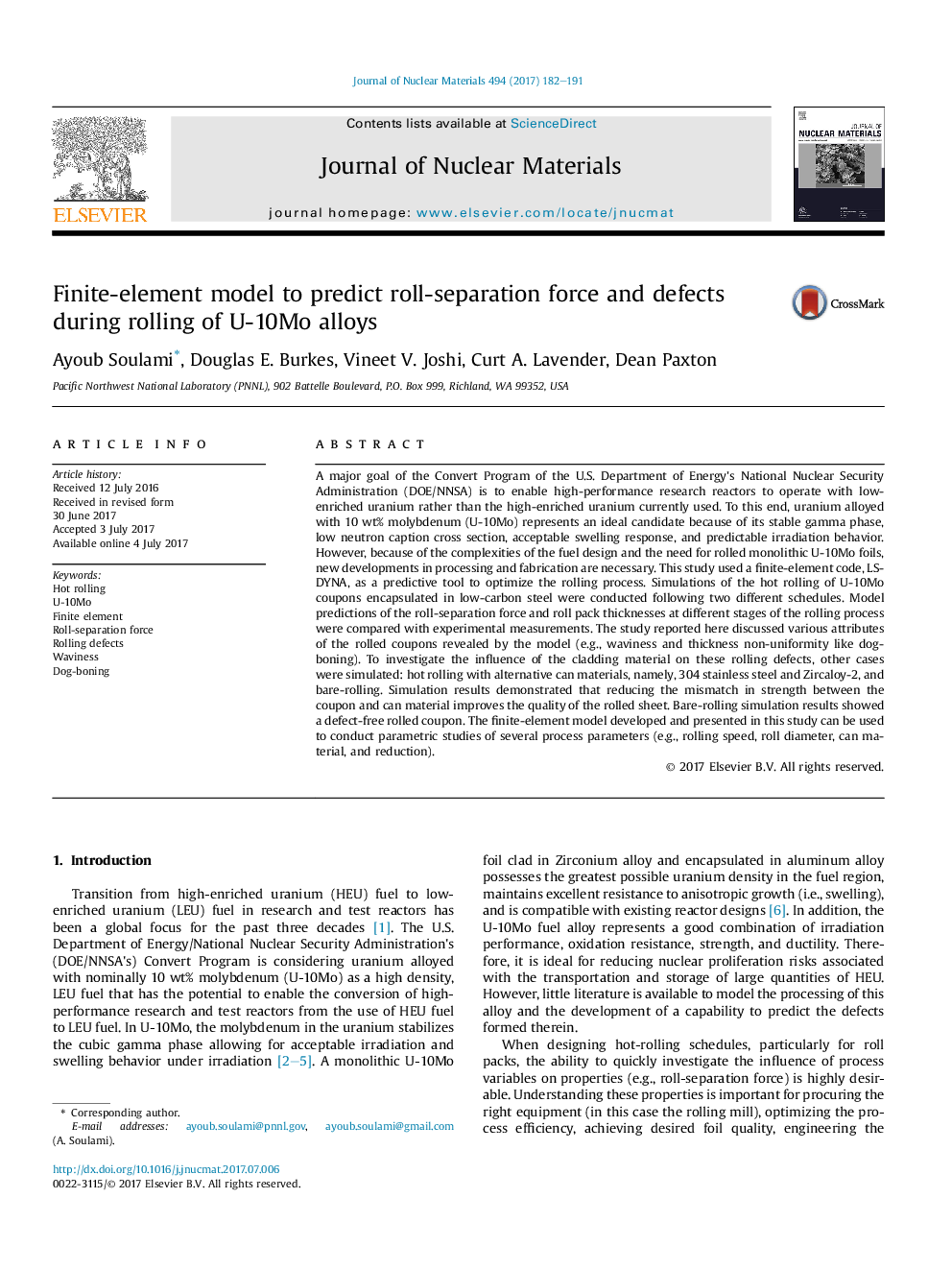| کد مقاله | کد نشریه | سال انتشار | مقاله انگلیسی | نسخه تمام متن |
|---|---|---|---|---|
| 5454085 | 1514152 | 2017 | 10 صفحه PDF | دانلود رایگان |
عنوان انگلیسی مقاله ISI
Finite-element model to predict roll-separation force and defects during rolling of U-10Mo alloys
دانلود مقاله + سفارش ترجمه
دانلود مقاله ISI انگلیسی
رایگان برای ایرانیان
موضوعات مرتبط
مهندسی و علوم پایه
مهندسی انرژی
انرژی هسته ای و مهندسی
پیش نمایش صفحه اول مقاله

چکیده انگلیسی
A major goal of the Convert Program of the U.S. Department of Energy's National Nuclear Security Administration (DOE/NNSA) is to enable high-performance research reactors to operate with low-enriched uranium rather than the high-enriched uranium currently used. To this end, uranium alloyed with 10Â wt% molybdenum (U-10Mo) represents an ideal candidate because of its stable gamma phase, low neutron caption cross section, acceptable swelling response, and predictable irradiation behavior. However, because of the complexities of the fuel design and the need for rolled monolithic U-10Mo foils, new developments in processing and fabrication are necessary. This study used a finite-element code, LS-DYNA, as a predictive tool to optimize the rolling process. Simulations of the hot rolling of U-10Mo coupons encapsulated in low-carbon steel were conducted following two different schedules. Model predictions of the roll-separation force and roll pack thicknesses at different stages of the rolling process were compared with experimental measurements. The study reported here discussed various attributes of the rolled coupons revealed by the model (e.g., waviness and thickness non-uniformity like dog-boning). To investigate the influence of the cladding material on these rolling defects, other cases were simulated: hot rolling with alternative can materials, namely, 304 stainless steel and Zircaloy-2, and bare-rolling. Simulation results demonstrated that reducing the mismatch in strength between the coupon and can material improves the quality of the rolled sheet. Bare-rolling simulation results showed a defect-free rolled coupon. The finite-element model developed and presented in this study can be used to conduct parametric studies of several process parameters (e.g., rolling speed, roll diameter, can material, and reduction).
ناشر
Database: Elsevier - ScienceDirect (ساینس دایرکت)
Journal: Journal of Nuclear Materials - Volume 494, October 2017, Pages 182-191
Journal: Journal of Nuclear Materials - Volume 494, October 2017, Pages 182-191
نویسندگان
Ayoub Soulami, Douglas E. Burkes, Vineet V. Joshi, Curt A. Lavender, Dean Paxton,